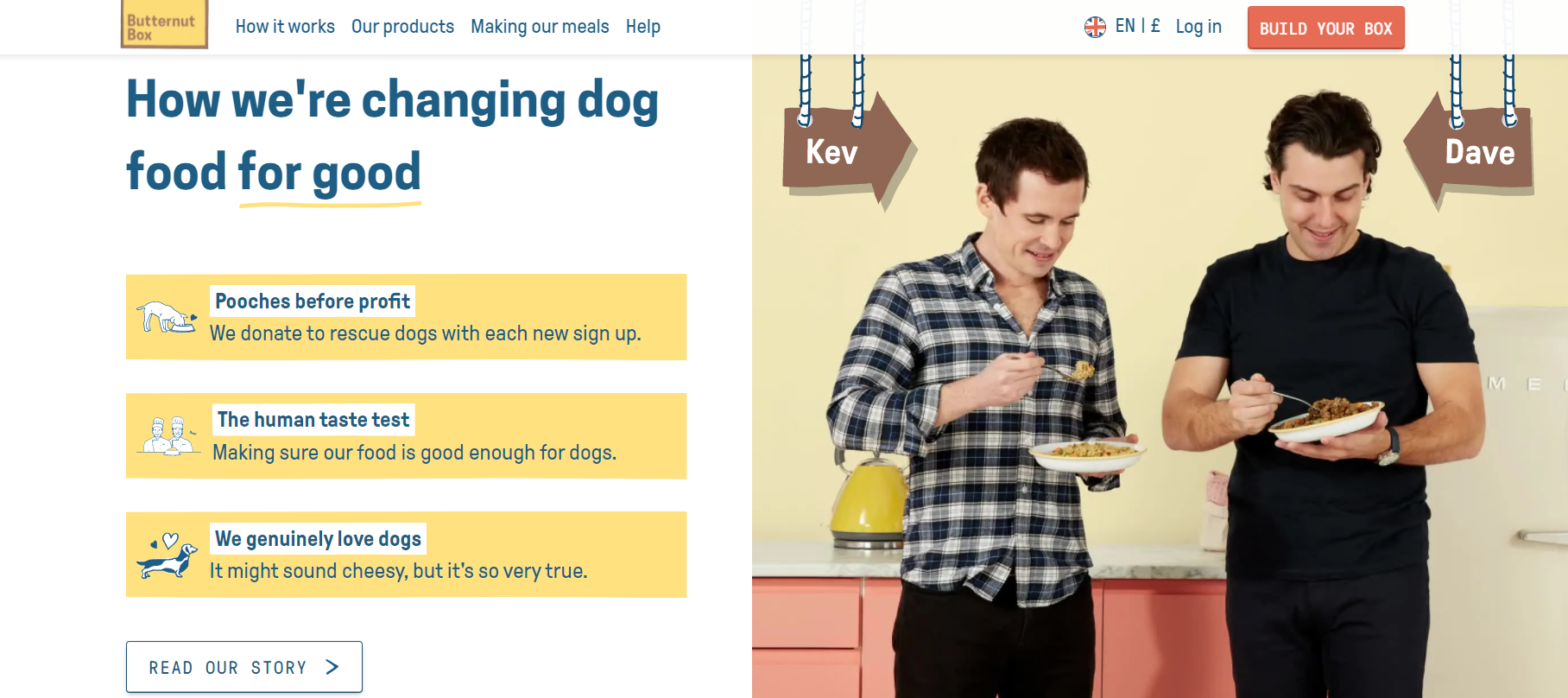You’re sitting at a table for two.
The sun warms your skin as you take in the hustle and bustle of the Parisian streets.
Your shades are resting on the bridge of your nose as you bite down on a crisp croissant.
You feel calm and content.
Hang on.
You’re not in Paris.
You’re standing in your local supermarket.
It’s a grey November day in London and you were walking to work when suddenly you were arrested by the smell of fresh croissants.
Before you knew it, you were standing in the freshly baked section trying to pick up a croissant with those plastic tongs.
What happened?
You felt something. The smell conjured up a happy memory. A moment of fulfilment, rest, and a sense of all being right with the world.
And it drew you in.
You weren’t hungry and are on a health kick. And you were running late.
But, the feeling created by that triggered memory was enough to change your trajectory.
Research shows that our emotions are strong predictors for our decisions. This includes our purchasing decisions, and that’s why your business needs emotional branding.
Let me ask you this. What does your audience feel when they encounter your brand?
What if I told you that your copy and content could have the same effect on your customers as that mouth-watering scent in the supermarket had on you?
I’ve got your attention now, haven’t I? Or just made you hungry.
Either way, this blog post will show you why emotional branding is a priority in the wake of some turbulent times and how to go about it.
Ready? Let’s do this.
Our brains and our decisions
To quote Jennifer Aniston’s famous L’Oreal advert.
Here comes the science bit. Concentrate.
According to Psychology Today, emotions drive our decision making. And studies show that consumers rely on emotions more than information when evaluating brands.
Imagine this. You’re standing in the canned goods aisle in Sainsbury’s. You’re choosing between Heinz beans and Sainsbury’s own version.
What do you choose?
It depends on what you’re feeling and why.
Perhaps you’ve always bought Heinz and you trust the brand and know what you’re getting.
But perhaps you’re struggling to make ends meet so paying more for Heinz reminds you of your unpaid bills while the own-brand option offers relief at the prospect of both eating and paying rent.
These are both rational decisions because they help you achieve your goals and lessen your pain. But those goals are defined by your emotions.
In which case, you need to inspire a certain feeling towards your brand that will attract your ideal customer – and it has to make rational sense for that customer and solve their problems.
Before we look at the ‘hows’, let’s look at why your bottom line needs you to make that emotional connection.
Why you can’t afford to ignore emotions
Try persuading a Manchester United fan to change their allegiance. You know, since they’re not having a great season. Or so I heard.
Actually, maybe don’t. You might get hurt.
Because no matter how their team performs, most football fans are loyal to the end.
According to Harvard Business Review, customers that are fully connected (through emotions) are 52% more valuable than those who are highly satisfied.
And the truth is, many brands stop at highly satisfied and high five at a sale made without going that step further where they develop that connection.
But truly connected customers are the key to customer lifetime value and revenue growth. For one thing, it will save you money in your marketing budget.
Before we dive in further, let’s pivot and get a little context.
So, there’s this virus…
And it’s turned our lives upside down. We stayed in. We did PE with Joe. We used Zoom. We shopped online and ordered take out.
A lot.
A crazy amount has occurred in the last few years that has impacted our worldview, our beliefs and our buying habits. Brexit, Trump, climate change, the fight against racism – it all makes for a melting pot of emotions and tested allegiances.
According to this article on CMSWire, over 75% of U.S. consumers switched brands during the pandemic as they found their current options weren’t serving their new lifestyles and needs as before.
When ordering in is your only option, why stick with a platform that charges for delivery when another one doesn’t?
This leads us nicely into the ‘how’.
Step 1: Let’s start at the very beginning
Remember when we talked about the beans. Each person’s context and situation will drive different emotional reactions.
Your brand strategy should have started with a deep dive into your ideal customer. If it hasn’t, I recommend you go back and do this. This blog post on Hubspot will lend a comprehensive hand.
Once you know your ideal customer and what they are feeling, you can then create a content strategy that will persuade them that your product or service will solve their problems.
In other words, meet their emotional needs.
Step 2: Bring some personality to your brand and content strategy
I’ve said it before and I’ll say it again. People buy from people. Take a look at your brand’s personality.
If it were a person, how would you describe it?
Fun, cheeky, serious, or aloof?
Let’s go three steps further. How often do your customers encounter emotion in your brand’s content?
Forbes shares that nearly 100% of customers are likely to show loyalty to a brand that offers complete transparency.
Machines aren’t easy to emotionally connect with.
Unless they’re C3PO.
So make people front and centre where you can. And ensure your content sounds like a person through conversational copy.
Dog food brand Butternut Box does a great job of this. I mean, they have a photo of their founders actually eating the dog food themselves.
If that’s not transparency, I don’t know what is.
Their content includes stories of their office dogs – some of whom are rescues – as well as customers’ social posts of their ‘butternutters’ tucking into their home-cooked meals.
They sure tug at the heartstrings of all pet parents looking for a healthier option for their beloved pooch.
Source: www.butternutbox.com
Step 3: Show emotion (I’m not crying, you are)
Vulnerability and shame researcher, Brené Brown, famously states that vulnerability drives connection.
This emotions game is a two-way street.
A genuine connection requires more than just manipulating the emotions of your customers. They will see through that as easily as freshly cleaned windows.
Being willing to get a bit vulnerable with your brand story and social content will help customers believe the values you declare on your website.
A couple of years back Nike took a big risk.
They created an ad with Colin Kaepernick, whose career in the NFL had been terminated following his ‘taking the knee’ protest against racism and police brutality.
Nike’s ad was a statement to the world about what they believed.
And there was a backlash.
But they were true to their brand values by showcasing their beliefs, and they earned increased loyalty from many of their customers as a result.
Step 4: Get more specific (spoiler alert: there are more than five emotions)
Joy. Sadness. Anger. Fear. Disgust.
Otherwise known as the characters in Disney’s Inside Out film.
Those are the basic emotions most of us are riffing off. But we’re nuanced creatures and there are many more emotions to choose from.
Getting more specific on exactly what you want your audience to feel will help you avoid sounding like everyone else who wants to make people happy with their product.
Plutchik’s Wheel of Emotions will give you more to work with. Find it here.
Step 5: Get emotional in your funnel
If you’re drawing a blank, check out this post where I break down what a sales funnel is and how to optimise the copy in yours.
Back to emotions. When planning your content strategy, you need to consider the stages of awareness and where your customers might be in your sales funnel.
How can you use emotion to make a stellar first impression (like that whiff of croissant)?
How can you inspire them to come back for more after that first purchase?
How could your content inspire feelings that lead to actions? Hint: with storytelling, visual language, and conversational copy.
According to Hubspot’s jam-packed post on Emotional Marketing, different emotions inspire different actions. They explain:
‘Happiness makes us share… Sadness makes us empathize and connect…’
Etcetera.
Step 6: What planet are you living on?
It should be the same one as your audience. Some brands made some major blunders in the last couple of years.
And this is one of the reasons why.
They didn’t connect their content and advertising with the current lived experience of their customers.
A key element to creating that emotional connection is to show empathy. Let’s look at a brand that’s done this well.
One look at the comments confirms the emotional connection Heineken made through this ad.
Let’s wrap up
You want your customers to choose you and only you.
For as long as possible, right?
The best way to do that is to make that connection through emotions. Because that’s the main way we all make our purchasing decisions. Science says so.
At each stage of your funnel, you want your brand’s content to inspire an emotion that you have strategically chosen based on your customers and the contexts they are living in.
By bringing some personality to your brand, wearing your heart on your sleeve (sometimes), and choosing a specific emotion that aligns with your brand story, you can create a feeling in your customer that’s as enticing as the scent of crumbly, freshly baked croissants.
Good luck!
Love,
Konrad

